#arabidopsis thaliana
Text
More recently, bioluminescence has evolved from laboratory tool to commercial plaything. The Kickstarter-funded, San Francisco-based Glowing Plant Project offers customers DIY kits they can use to genetically engineer a luminous Arabidopsis plant at home. And Carlsbad, California-based BioPop has released what is essentially an illuminated version of that long beloved novelty pet for kids, Sea-Monkeys (which are not in fact tiny aquatic primates, but rather brine shrimp). They call it Dino Pet: a small, vaguely Apatosaurus-shaped aquarium filled with bioluminescent plankton known as dinoflagellates. During the day, the plankton photosynthesize; at night, if you shut off the lights and give the aquarium a good shake, the dinoflagellates light up turquoise, much like the “fiery sparks” Chinese sailors observed in churning seawater so long ago. But the glow is only good for about three shakes a night, and if you’re too rough, you could damage or kill the plankton.
It’s easy to pity those tiny swimming stars trapped in a plastic bubble. Each night, some titan’s hand engulfs their ocean and churns it into a maelstrom for a few moments of selfish delight. Then the monster puts away their entire universe, easy as shutting the lid on a music box. They are kept alive solely for the purpose of this bedside magic trick.
Perhaps, though, we are the more pathetic members of this relationship—the gods bewitched by a gnat. Bottling bioluminescence gives us a sense of ownership over a presumably rare and otherworldly phenomenon; the reality of the situation is quite different. Bioluminescence is so commonplace on our planet—particularly in the oceans—that scientists estimate the thousands of glowing species they have catalogued so far are just a fraction of the sum. It may well be that the vast majority of deep-sea creatures, which live beyond the Sun’s reach, generate their own light (sometimes with the assistance of microbes). They use these innate glows primarily to communicate: to warn and frighten, hide and hunt, lure and beguile. Bioluminescence is one of the oldest and most prevalent languages on Earth—and one that is largely alien to us. Despite our fantasies and mythologies, the truth is that there’s nothing supernatural about living light; it has been a part of nature for eons. It’s just that we were denied this particular gift.
So, with perhaps too little gratitude, we adapted the incomparable talents of glowing creatures for our own purposes. We borrowed their light and it revealed things about our own biology we might never have discovered otherwise. But that is all we can do—borrow. We cannot be them, so we seek them out, and draw them near us—every bit as mesmerized as when we thought the Sun had impregnated the sea. To this day, we cup them in our hands, collect them in jars, and place them on our nightstand, forever trying to satisfy our Promethean hunger.
— The Secret History of Bioluminescence
#ferris jabr#the secret history of bioluminescence#science#biology#microbiology#marine biology#botany#animals#chemistry#physics#commerce#psychology#arabidopsis thaliana#dinoflagellates#bioluminescence#light
190 notes
·
View notes
Text

Work in progress! Can’t wait until it’s ready for the masking tape to come off!
Acrylic on canvas board. It’s fine to practice on, but the boards low quality sometimes feels like I’m fighting my materials 😂
Also I stayed up way too late for this and now I’m very tired
#arabidopsis thaliana#thale cress#wildflowers#art#traditional painting#traditional art#acrylics#acrylic painting#acrylic paint#flowers#nature art
43 notes
·
View notes
Text
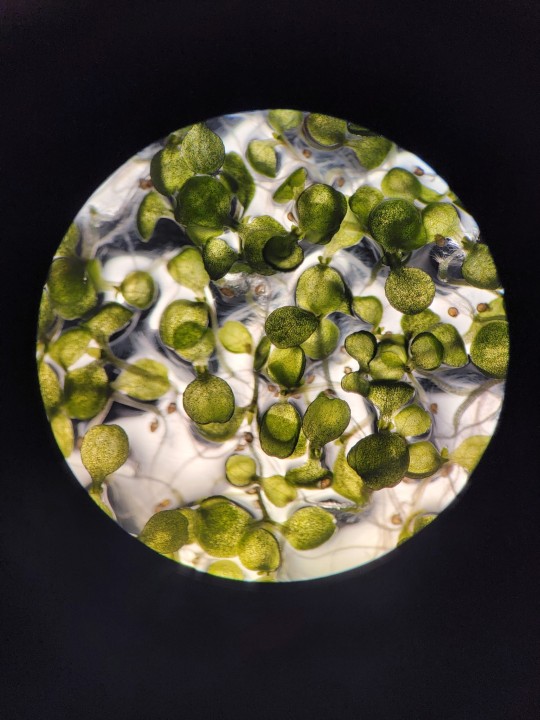
Arabiposis thaliana seedlings under a microscope. These guys are contamination-free. 🌱
Redbubble / Instagram / Online portfolio
#oliviahathaway#photography#photographers on tumblr#plant#Arabidopsis thaliana#Arabidopsis#seedlings#microscope
2 notes
·
View notes
Photo
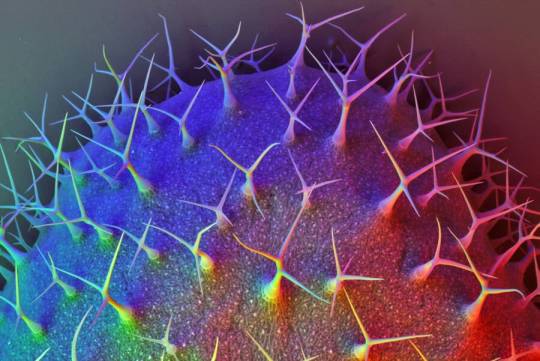
An image of an Arabidopsis thaliana leaf, which is used as a model organism in plant biology research — and was the first plant to have its entire genome sequenced.
Wikimedia Commons
#wikimedia commons#photographer#arabidopsis thaliana#autumn leaf#micro photography#electron microscope#nature
5 notes
·
View notes
Text
Guys!!! NASA GREW Arabidopsis thaliana IN LUNAR SOIL!!
THATS ONE SMALL STEP FOR HUMANS, ONE GIANT LEAP FOR YOSHI GETTING HER OWN ARBORETUM ON DS9!!!
#star trek#nasa earth#nasa#nasa artemis#lunar soil#Arabidopsis thaliana#space plants#yoshi O’Brien#Kirayoshi O’Brien#ds9
2 notes
·
View notes
Text
Arabidopsis thaliana - the botanist's lab rat
Model Organisms: Definition, Characteristics and Examples
The term model organism defines a species that is used in the lab to study biological processes with the assumption that novel findings in a simple system can provide insights into similar mechanisms in other complex organisms. This expectation is based on the evolutionary principle that all living organisms originated from a common…
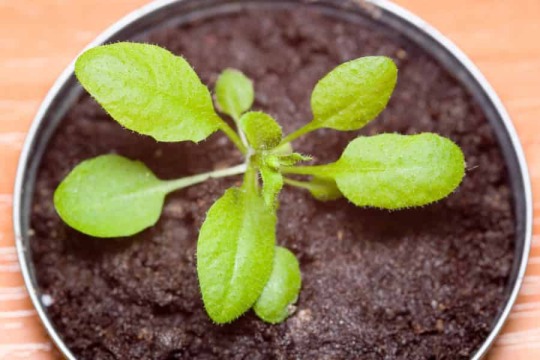
View On WordPress
0 notes
Text
Second, even for Arabidopsis, some limited variation in cell division behavior during normal embryogenesis can be seen by following the fates of individual cells with sensitive fate-mapping techniques (Figure 17.7).

"Plant Physiology and Development" int'l 6e - Taiz, L., Zeiger, E., Møller, I.M., Murphy, A.
#book quotes#plant physiology and development#nonfiction#textbook#dna#fate#arabidopsis#arabidopsis thaliana#gus gene#plant cells#cell division#plant growth#embryogenesis
0 notes
Text
The genome of Arabidopsis is made up of only about 157 million base pairs (Mbp), which are distributed over five chromosomes.
"Plant Physiology and Development" int'l 6e - Taiz, L., Zeiger, E., Møller, I.M., Murphy, A.
#book quote#plant physiology and development#nonfiction#textbook#Arabidopsis thaliana#base pairs#genes#genetics#genome#chromosomes#genetic distribution
1 note
·
View note
Text
Bitkilerde Strateji
Bitkilerde Strateji
Bitkilerinde de kendilerine has ilginç stratejileri bulunuyor. Bazıları kendilerine dadanan tırtılları kovacak için ��zel salgılar salgılıyor, bazıları arı sesini duyunca nekatar üretimi hızını artırıyor, bazıları ise komşu bitkilerden yansıyan akrabalık ilişkisini anlayabiliyor.
Arı orkidesi (Ophrys apifera) – Bitkilerde Strateji
Örneğin domates bitkisi kendilerine dadanan…
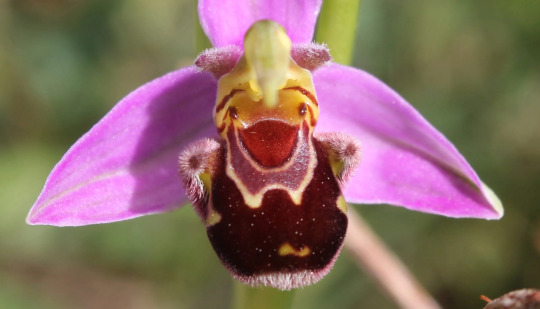
View On WordPress
#Arabidopsis thaliana#arı orkidesi#bitki#bitkiler#Bitkilerde Bilinç#Bitkilerde Kimyasal Savaş#Bitkilerde Strateji#Bitkilerin de Bilinçleri Var#Bitkilerin Kendilerine Has Bilinç#Bitkilerin Kendilerine Has Bilinci Olabilir#Bitkilerin Kendilerine Has Bilinci Olabilir mi?#Çuha#domates#Ebeveyn Ağaçlar#Elektrik Sinyalleri#Kuzu kulağı teresi#meşe ağacı#Ophrys apifera#Primula veris
0 notes
Text

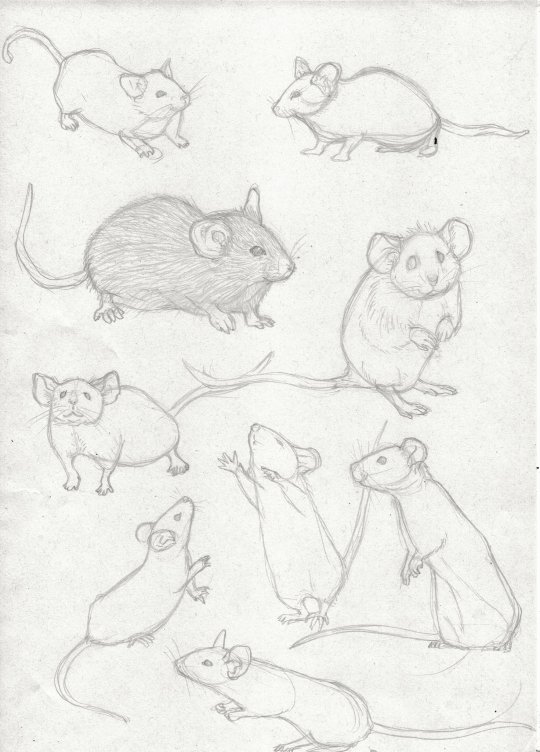


More stuff from 2019
Bastión de los Pescadores, Budapest, Hungary
mus musculus, drosophila melanogaster and arabidopsis thaliana sketches
#my art#swallow art#budapest#bastion de los pescadores#hungary#ink#postal#art#artwork#sketch#pencil sketch#watercolor#mus musculus#drosophila#drosophila melanogaster#arabidopsis#arabidopsis thaliana#sci art#scientific art#acientific illustration
1 note
·
View note
Text
Plants produce a smell when damaged. Other plants can detect these signals to put on their own defenses.
Plants can produce chemicals that harm herbivores or attract predators.
Caterpillars were placed on leaves cut from tomato plants Arabidopsis thaliana. The plants were genetically altered so their cells contained a biosensor that fluoresced green when an influx of calcium ions was detected. Calcium is used for communication in plant and animal cells.
Plants perceive volatile organic compounds (VOCs) released by mechanically- or herbivore-damaged neighboring plants and induce various defense responses. Such interplant communication protects plants from environmental threats.
Plant-plant communication occurs when undamaged receivers induce resistance in response to a cue from a damaged neighbor, the emitter.
There are two hypothesis one it allows the plants neighbors to be prepared for a herbivore attack. Or have all the plants produce chemicals to hurt the predators.
2 notes
·
View notes
Text
8 notes
·
View notes
Text
Genes, Vol. 15, Pages 1: #RNA Polymerases IV and V Are Involved in Olive Fruit Development
Transcription is carried out in most eukaryotes by three multimeric complexes (#RNA polymerases I, II and III). However, plants contain two additional #RNA polymerases (IV and V), which have evolved from #RNA polymerase II. #RNA polymerases II, IV and V contain both common and specific subunits that may specialise some of their functions. In this study, we conducted a search for the genes that putatively code for the specific subunits of #RNA polymerases IV and V, as well as those corresponding to #RNA polymerase II in olive trees. Based on the homology with the genes of Arabidopsis thaliana, we identified 13 genes that putatively code for the specific subunits of polymerases IV and V, and 16 genes that code for the corresponding specific subunits of polymerase II in olives. The transcriptomic analysis by #RNA-Seq revealed that the expression of the #RNA polymerases IV and V genes was induced during the initial stages of fruit development. Given that #RNA polymerases IV and V are involved in the transcription of long non-coding #RNAs, we investigated their expression and observed relevant changes in the expression of this type of #RNAs. Particularly, the expression of the intergenic and intronic long non-coding #RNAs tended to increase in the early steps of fruit development, suggesting their potential role in this process. The positive correlation between the expression of #RNA polymerases IV and V subunits and the expression of non-coding #RNAs supports the hypothesis that #RNA polymerases IV and V may play a role in fruit development through the synthesis of this type of #RNAs. https://www.mdpi.com/2073-4425/15/1/1?utm_source=dlvr.it&utm_medium=tumblr
2 notes
·
View notes
Photo

Arabidopsis thaliana flower with pollen tubes growing through the pistil. The flower tissues were chemically cleared to become transparent, while the pollen tubes were stained with aniline blue (yellow fluorescence) in order to be seen.
By Jan Martinek (Czech Republic)
Olympus Image Of The Year Award
#jan martinek#photographer#czech republic#arabidopsis thaliana flower#pollen tubes#pistil#aniline blue#yellow fluorescence#micro photography#nature#olympus image of the year award
36 notes
·
View notes
Text
They talk now: Defensive Arabidopsis thaliana plants could be the future of plant research
A shocking discovery was made today at the Southnorthern University’s Plant Research Center (PRC) that has left the Arabidopsis research community speechless.
“They can talk now!” said one graduate student, running through the halls in terror. “Oh god,what have I done!”
In a dark corner on the first floor of the PRC, a grad student sat, working on their thesis.
“We were using breeding techniques to isolate plants with high levels of defense against insects,” they said. The student has asked to remain anonymous. “Apparently we did too good of a job.”
They started with plants with high levels of defense, and bred them with their wild-type counterparts. They then looked at the offspring to find plants with specific defense traits.
“There was one that stood out to me as strange,” the student remarked. “I decided to grow it, see what happened.”
What happened was beyond their imagination.
“It… it got defensive! It started speaking to me, calling me all sorts of names, like a dumb-”
We at Fake Plant News Media cannot publish some of the profanities uttered by the mutant plant.
“And then it was like, ‘who are you calling a mutant, with your receding hair line and inbred features only a sister could love?’ It was awful.”
Who knows where this discovery will lead. Could talking plants be the future of agricultural production? Will we have to stop experimenting on them, now that they’re sentient? Can I have one to give to my mother-in-law so she can feel what it’s like to talk to herself? These questions and more the graduate student’s next steps in this line of research.
“Well, I don’t know about the mother-in-law thing…”
I’m Ara B. Dopsis, signing off.
4 notes
·
View notes